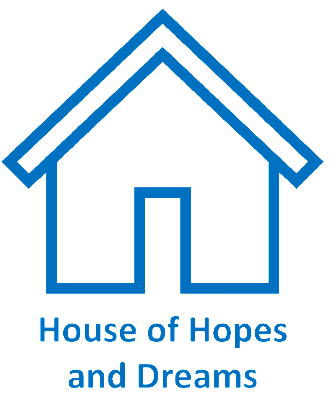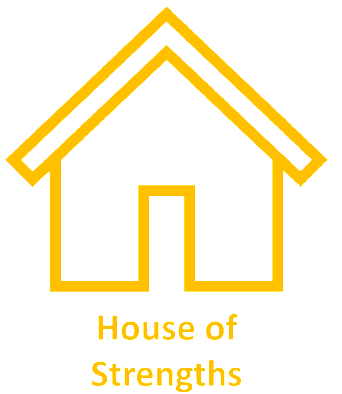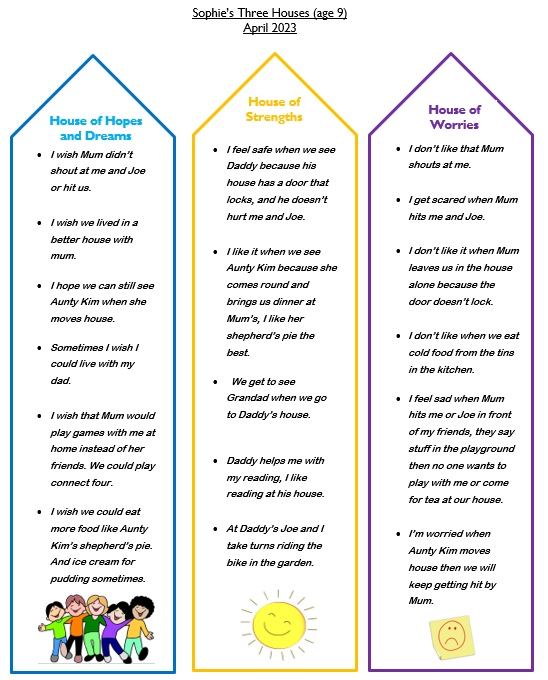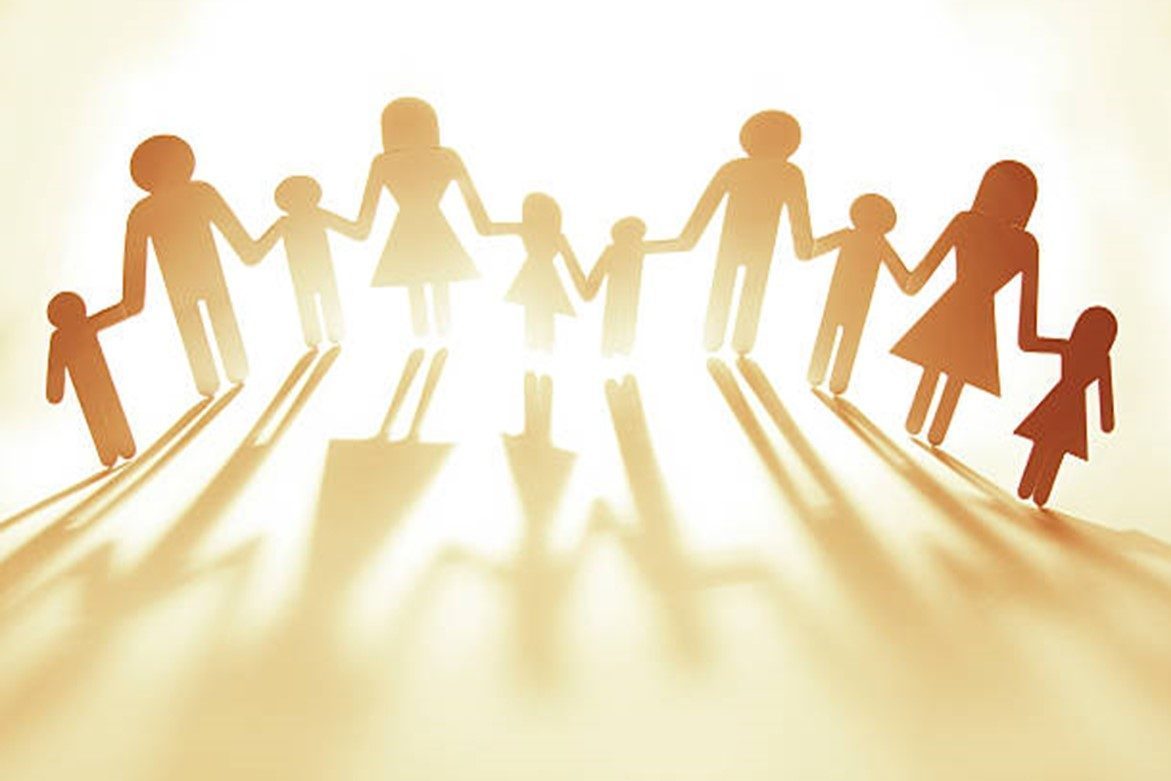The Three Houses
‘The three houses’ is a tool we can use with children/families to engage them in meaningful conversations about their thoughts, feelings and aspirations for the future. It is designed to help children and families externalise and explore what is happening in their lives, which are represented by the three different houses:

Here, children/families can express their aspirations and goals for what their life is like in the future. This helps to identify targets and working towards a better outcome. Without a goal to work towards, children, young people or families may be less motivated to work towards sustained change.
The hopes and dreams the child or family decide on should be related to the worries and concerns they have so that it isn’t just an unrelated wish list.

In this house, children/families can share and celebrate the positive aspects of their life currently. This helps to promote strengths, achievements and what makes them happy. The strengths and achievements in a person’s world often become the resources and ways to help manage worries and concerns and support them to reach hopes and dreams.
If a child or family cannot identify many things to put in this house, this indicates that additional resources are needed to build more safety and greater well-being in their lives.

This is where children/families can express what they may be worried or concerned about. These could be both internal and external to the home and can also include behaviours from themselves or others that increase the likelihood of distress or harm.
The House of Worries should be a safe space where the child/family feels able to bring up challenges and acknowledge areas in which they may need some support.
Why use this tool?
Identify aspirations, strengths and concerns related to safety and building protective factors.
Provide opportunities for children/families to give their views on support they receive, what help they would like and who from, and review what has or hasn’t worked in the past.
Identify where further support or intervention is required and what resources the family have available to them already.
Gain further understanding of child/family’s lived experience.
Develop relationship with child/family through meaningful and honest conversations.
Completing the Three Houses:
Ask the child or young person to draw and decorate the three houses on separate pieces of paper or use a template (see below) and label each one.
Inside the House of Worries and Concerns the child/family should draw/write down anything internal that makes them feel worried or scared. This could be things such as values, self-perceptions, thoughts, and feelings. Around the outside of the house, they should draw/write anything external that worries them. This could be (but is not limited to) wider family, peers, school, places, events etc.
Inside the House of Strengths, the child/family should draw/write down anything internal that makes them feel happy. This could be things such as what they like to do or are good at, things that happens at home that they enjoy, etc. Around the outside of the house, draw/write down anything external that makes them feel happy. Again, this could be wider family, peers, school, events, places, or activities they enjoy.
For the house of hopes and dreams, ask the child/family the ‘miracle’ question- What would life be like if there was a miracle overnight and you woke up in a perfect world? Draw/write down these ideas.
Now, a pathway between the House of Worries and the House of Hopes and Dreams should be drawn. This creates a visual scale, and the child/family should be asked to show where they think they are by locating themselves on the pathway. Closer to the House of Worries would mean that they are worried these things are very likely to happen in the future, whereas closer to the House of Hopes and Dreams would suggest that all their hopes are already happening, and the child is not worried about their safety at all.
A summary of the conversation should be recorded, and an action plan written alongside the child/family.
Points to remember:
Everything should be recorded in the child or family’s own words.
This tool should help to inform the overall plan for the child. young person or family.
Date the piece of work that that it can be referred to or revisited in the future to determine how things are going.
Finally…
As this piece of work prompts meaningful discussions and helps to build a clear picture of a family’s lived experience, it is a popular tool that social workers choose to complete. However, young people tell us that they have often completed this several times in a short space of time with a variety of professionals. This affects the overall effectiveness and can lead to children, young people or families feeling disengaged with the support they are receiving.
Before choosing to complete this piece of work, take some time to reflect on the child or family’s previous experiences and whether this tool is the most appropriate piece of work to complete with them at this time. Is there another tool that be more useful to the child and family? How else could you develop your relationship and understanding of this family?
Other suggestions can be found in the Neglect Practitioners’ Toolkit HERE.


